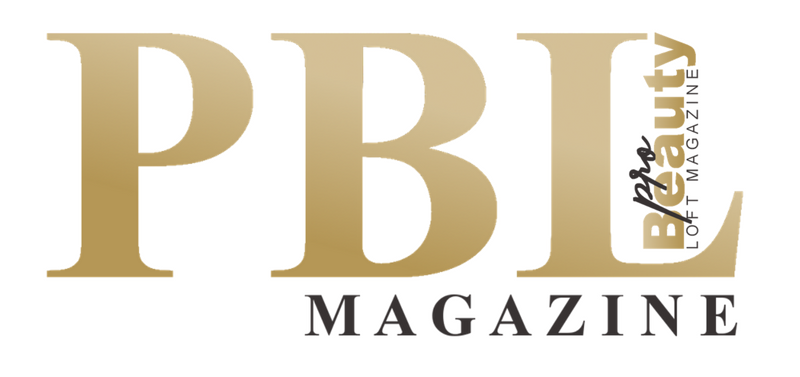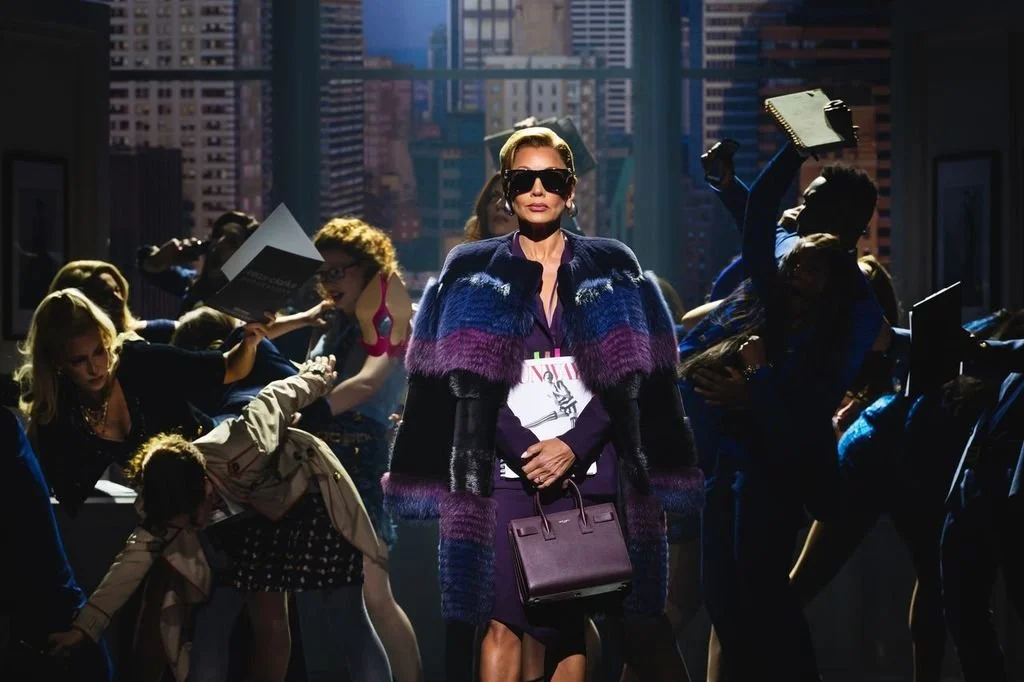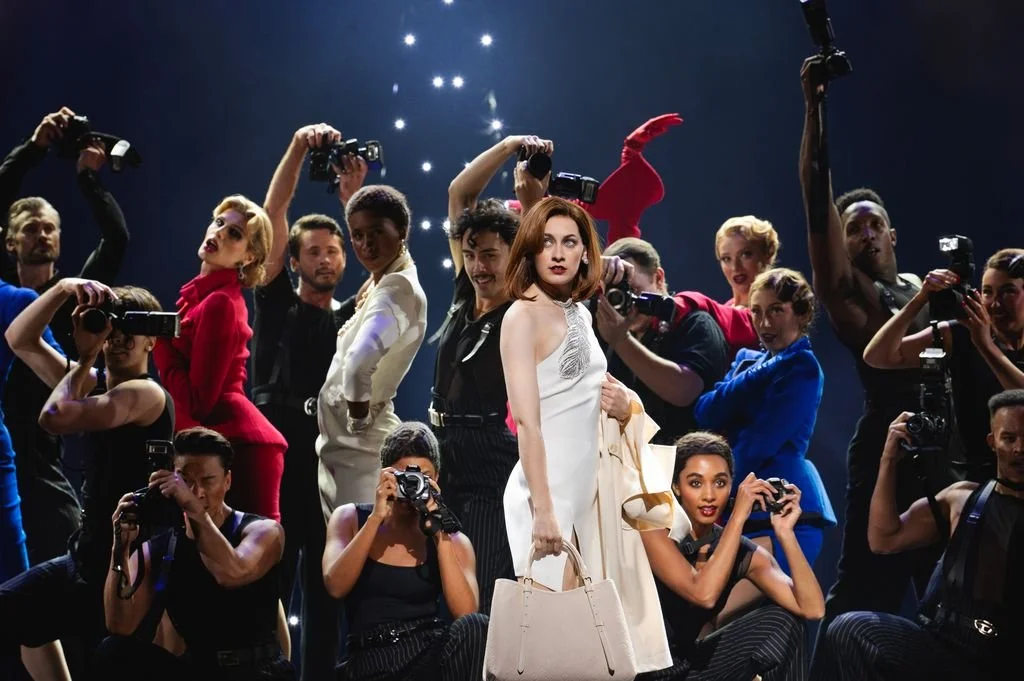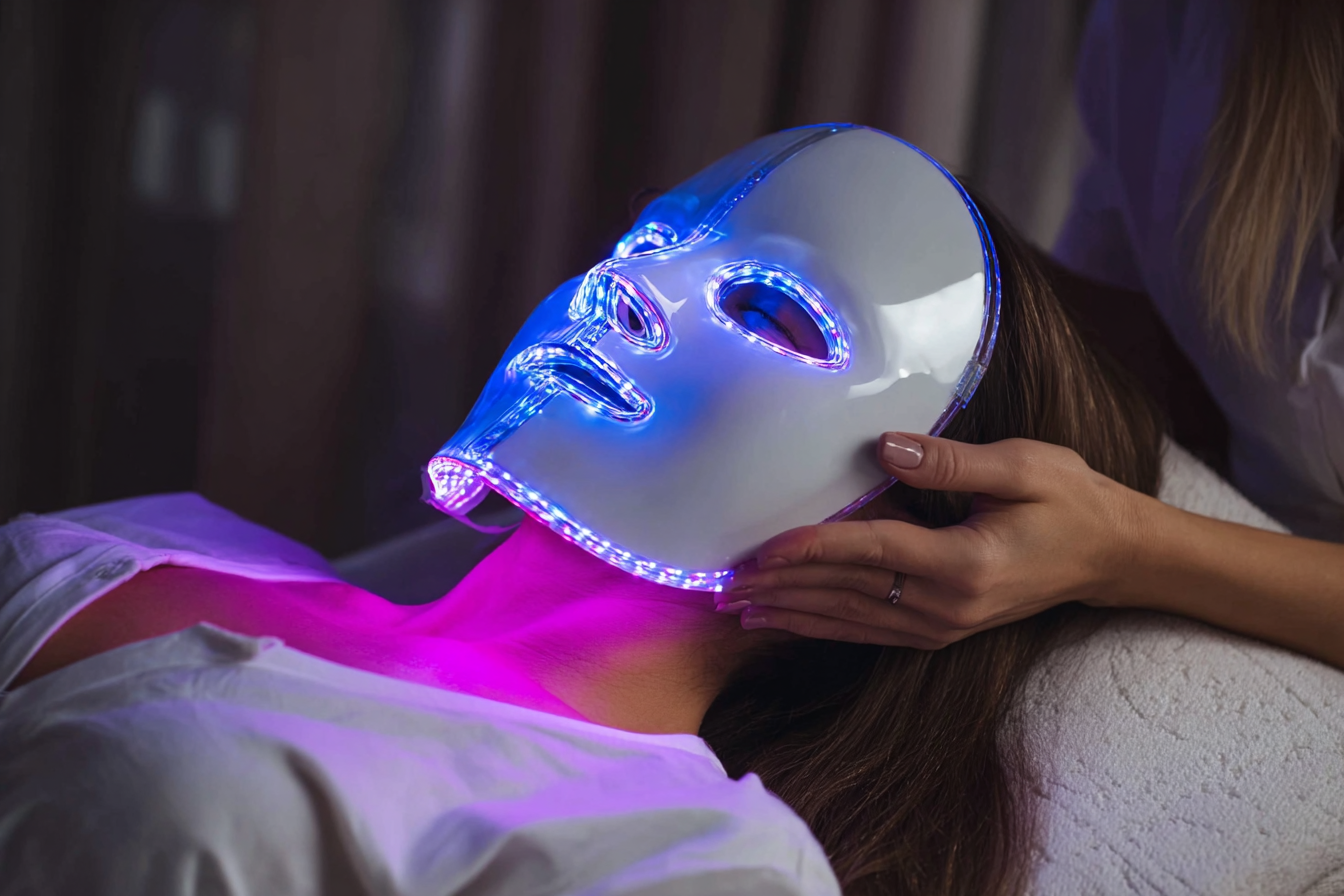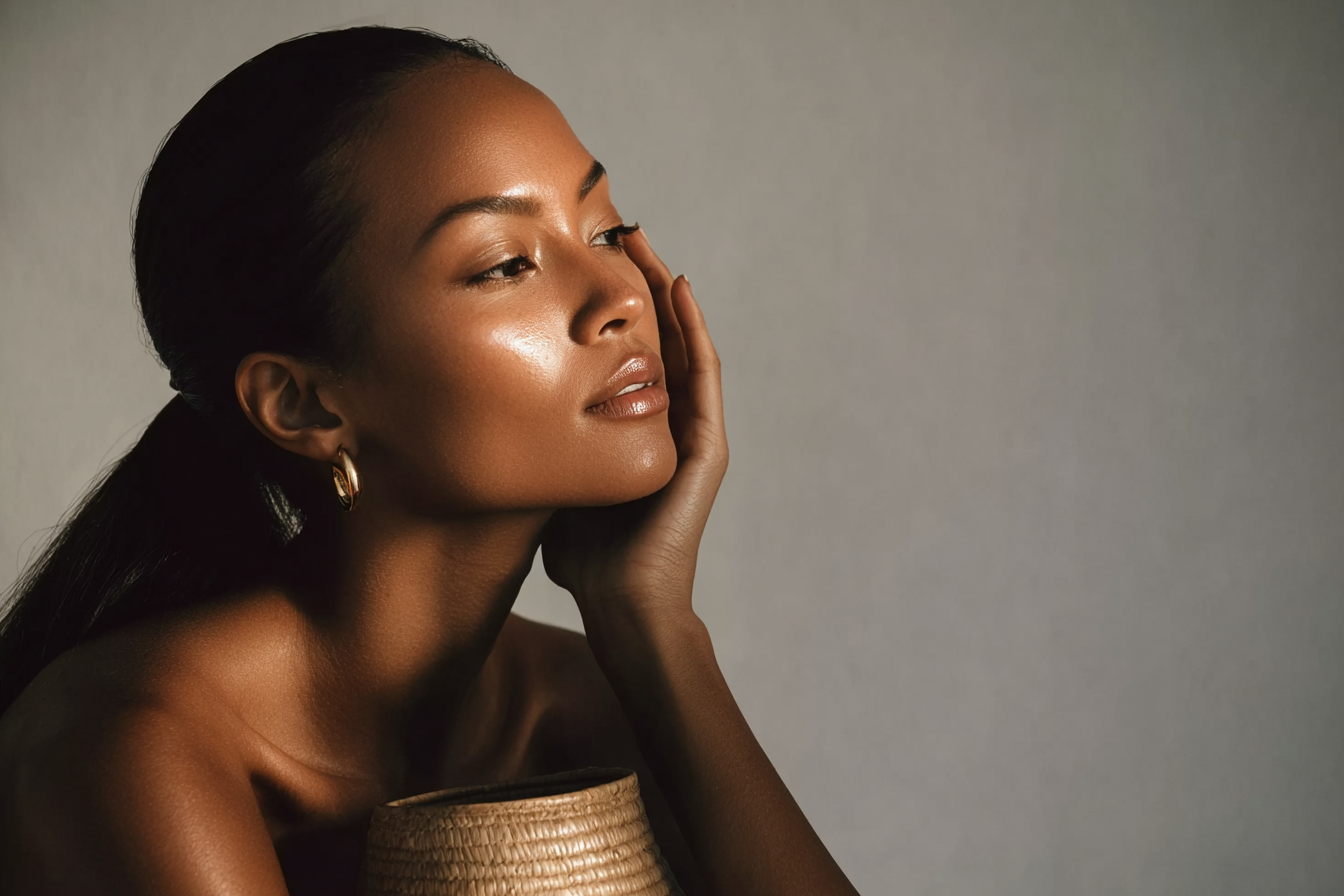Carolina Quina on Craft, Class, and Creating The Devil Wears Prada’s Iconic West End Looks
Pictured: The Devil Wears Prada on the West End, London Dominion Theatre.
Step inside the world of The Devil Wears Prada: The Musical, and behind the glittering costumes and fashion-forward finesse is a quiet powerhouse making it all look effortless. Carolina Quina, Head of Wigs, Hair, and Makeup, leads one of the most meticulous departments in theatre with an eye for detail and a deep love for transformation.
Her journey began with a neatly arranged makeup corner and a willingness to follow curiosity. What started as a gap-year exploration quickly became a career shaped by precision, patience, and passion. Now, with 50 + wigs in rotation and a backstage team running like clockwork, Quina ensures every hairline, curl, and crown is stage-ready night after night.
What initially sparked your interest in wig and makeup artistry?
To be honest, I never thought this would end up being my job. I actually dreamt of being an actress, but when I was 18, I didn’t get into theatre school. I looked around my room and thought, “What else do I like doing?” I saw my neatly organised makeup corner and thought, “Why don’t I study makeup for a year? Just a gap year to focus on something else I enjoy.” That’s how everything started.
How did that lead to working on The Devil Wears Prada? Can you share a bit about your journey?
I’ve been in the industry for quite a while and have done a lot of different things. I started out in Portugal working in fashion and TV. When I moved to the UK, I had to start from scratch and build a network, because in this business, it really is about who you know.
Eventually, I got the invite I had been hoping for — to start working in theatre — and I haven’t stopped since. Interestingly, I didn’t expect my role to evolve so much within a production. I pay a lot of attention to detail, especially in the wig room, and every day I come in thinking, “How can I be my best self today?” Obviously, everyone has good and bad days, but I always aim to do my best, and I think people noticed.
Even while working on this show, I took some courses during my holidays to keep improving. I think people recognised how hard I worked, even though I wasn’t working for anything in particular — I was just working on myself. And then everything else followed. I’m really happy and grateful.
Pictured: The Devil Wears Prada on the West End, London Dominion Theatre.
How many wigs are used in the production, and what kind of maintenance do they require day to day?
We have a lot of wigs — around 50 in every show — and that’s not even counting the hairpieces that go on top of some wigs, which I can’t talk about because... spoilers!
There’s a huge amount of maintenance involved. What many people don’t realise is that the wigs, hair, and makeup department is one of the hardest working in theatre. We're usually the first ones in and the last to leave. The other night, for example, I was restyling a wig at 10:15 PM even though the show ended at 10. It’s a lot of behind-the-scenes work.
Even if a wig is only on stage for two minutes, hours of effort went into it. And the styles in this show may look simple, but often the simplest styles are the most intricate to perfect. Because this show is all about fashion and class, everything needs to look flawless all the time. We have a big team working in the wig room to make sure that happens.
Is there a particular transformation in the show that’s your favourite to work on?
That’s such a hard question because I honestly love all of our wigs. That’s one of the reasons I love my job so much. The quality of the hair is incredible.
Obviously, there’s the iconic transformation scene — which, most nights, is done on stage by our amazing WHAM Deputy, Elizabeth Clinton. That’s a standout moment, especially because it mirrors a powerful moment from the movie.
But I also love the MET scene — the quick changes, the costumes, the added hairpieces, the crowns. Suddenly, everyone looks so glamorous. It’s a really fun and striking part of the show. It’s hard to choose just one because they all look beautiful in different ways.
How do you collaborate with the wider creative team to ensure everything stays visually cohesive?
There are a lot of steps involved. During tech, before the public sees anything, we spend countless hours testing designs. It’s a lot of trial and error. Once we get to opening night, the styles are locked. They have to stay exactly the same for the rest of the run.
I ask a lot of questions during tech — about the look, the construction, what they want to see. It’s about clarity and communication.
We also create what's called a wig bible, where we photograph every single wig to make sure it stays consistent throughout the run. That’s what guides us every day.
Pictured: The Devil Wears Prada on the West End, London Dominion Theatre.
Is there a particularly memorable or rewarding moment you've had on the show so far?
There have been many, but one I’ll never forget is the day I found out I’d been offered the job as Head of Wigs, Hair, and Make-up for this show. I’d worked so hard and honestly never expected to take on that role here.
When I first moved to London ten years ago, I remember standing across from the Dominion Theatre thinking, “One day, I want to work there.” And then it actually happened — and not just working there, but leading a department. I was blown away.
Also, our press night was iconic. I even managed to appear in the corner of a backstage photo with Donatella Versace, which was pretty surreal.
Where do you find your inspiration — whether for this show or your work in general?
First of all, the internet. I create moodboards daily. I’m always looking for makeup and hair inspiration, training my eye to recognise what works visually. As a creative, I’m constantly absorbing images so my brain can process and remix them later. I use Instagram and Pinterest a lot. That way, if someone asks me to create a moodboard on the spot, I can pull something together in five minutes.
I also collect hair and makeup books and go back to them regularly. Movies, magazines, going to a museum are all great sources of inspiration. And sometimes my inspiration comes from outside of hair and makeup — through painting or writing. It might not seem connected, but for me, creativity is a muscle. Using different outlets helps keep me motivated and inspired.
Do you have any advice for someone looking to break into wig and makeup artistry in theatre?
Definitely. First, take one of the many excellent courses available in the UK — they’re well recognised in the industry. Then, practise on people — your friends, whoever you can. Do your research.
And then there’s networking, which I know sounds vague, but it can be as simple as staying in touch with people you meet in other jobs. I worked in retail with someone years ago, and now we’re both doing really well in our careers as freelancers. Everyone starts somewhere.
Work hard, even if no one’s watching. That’s always been my mindset. I just keep showing up, doing the work, trusting that it’ll pay off someday. And it has. I’ve had amazing opportunities and collaborations, and I know more will come if I stay consistent.
It’s really about perseverance and believing in what you’re doing.
What are your goals for the future? Is there a dream production or project you'd love to take on?
That’s a tough one. In the near future, I’m still very much focused on this project. I want to see how far I can go with it.
But beyond that, I definitely want to keep learning. There’s still so much I want to improve and understand. If I could take a new course every week, I would.
I’ve also been thinking about working in film more. I’ve done a little, but not enough to satisfy that dream. I feel really positive about the future. I always choose projects I’m passionate about. So as long as I keep checking in with myself and doing what excites me, I know the right opportunities will come.
Pictured: The Devil Wears Prada on the West End, London Dominion Theatre.
Carolina Quina’s approach is rooted in more than just technical skill. It’s about presence, persistence, and pride in the process. Her path has been one of steady growth, shaped by long nights, creative problem-solving, and an ongoing hunger to learn.
As The Devil Wears Prada continues its run, Quina remains focused on elevating every detail while keeping her creative spark alive. Whether she’s crafting couture-level styles or training her eye through daily moodboarding, she proves that backstage brilliance is anything but behind the scenes. Her story reminds us that consistency, curiosity, and quiet confidence are the ultimate markers of success.
For those eager to see the magic in action, tickets for The Devil Wears Prada at the Dominion Theatre start at just £20, book now via the official site and step into a world of style and spectacle
